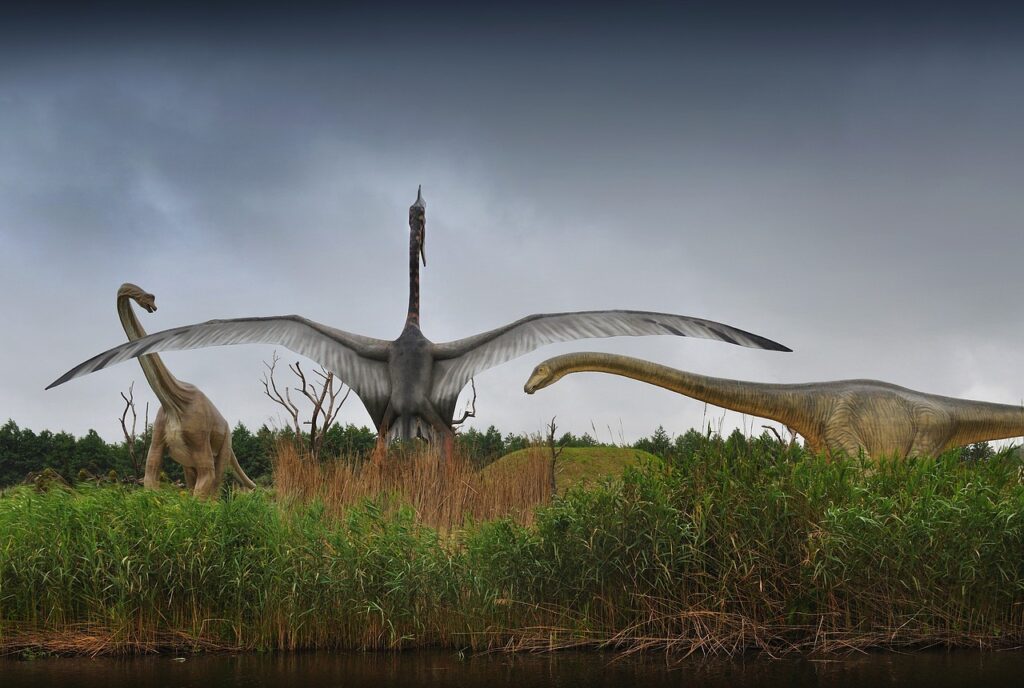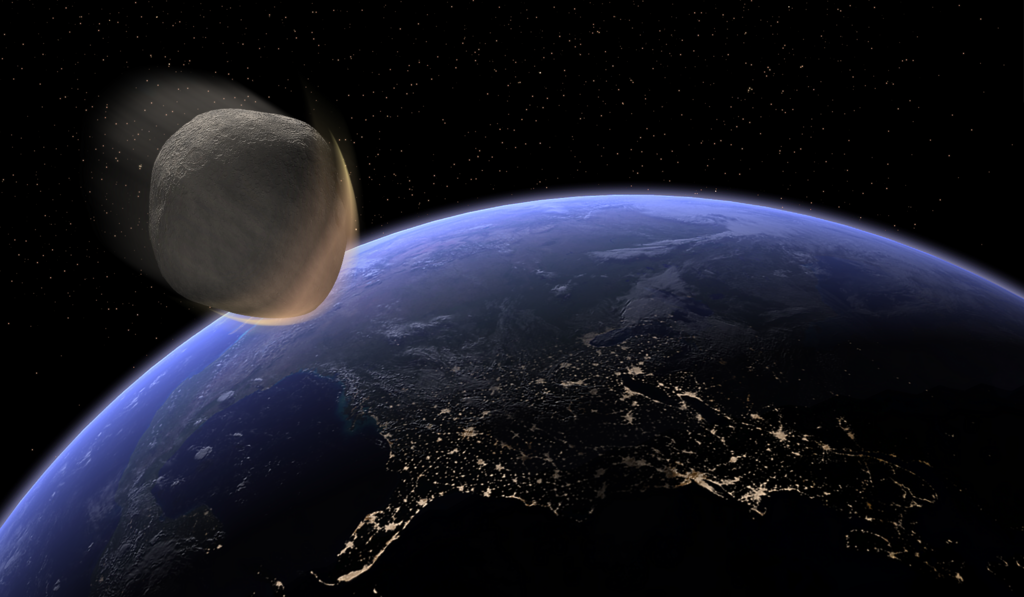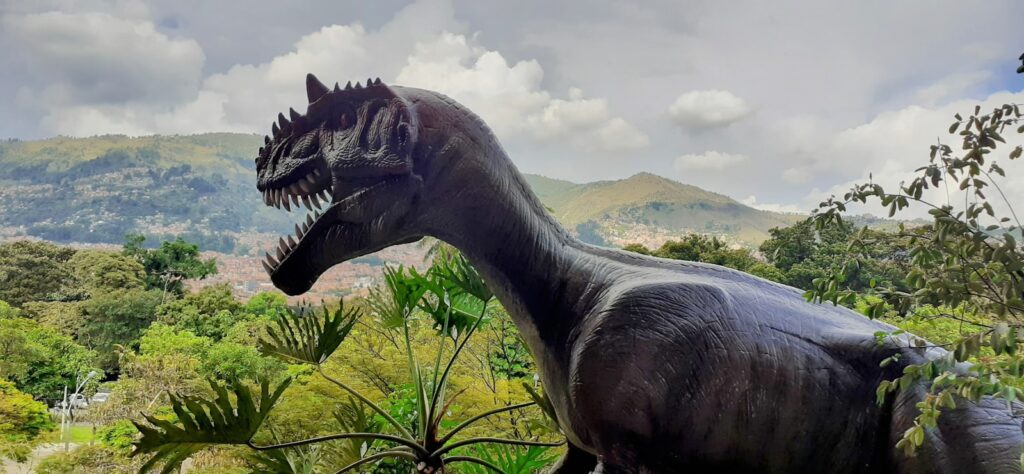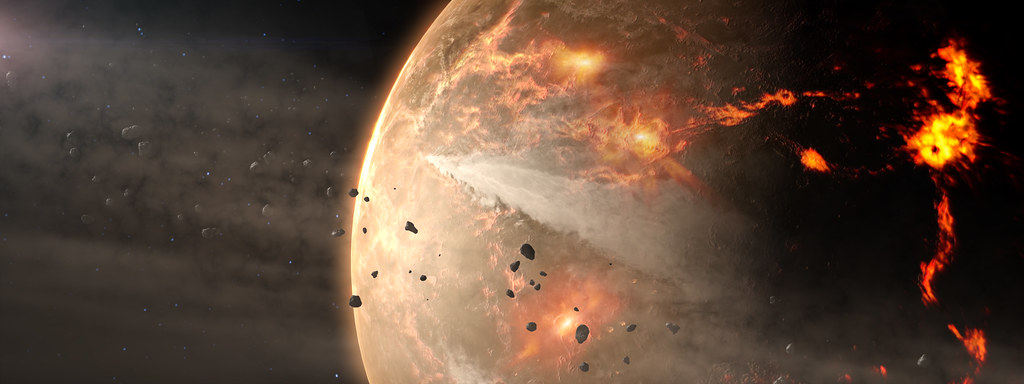Step into the Jurassic, a time when dinosaurs didn’t just survive—they flourished on a scale the planet had never seen before. Towering sauropods stretched their necks skyward, predators grew fiercer, and lush landscapes offered food and shelter in abundance. With warm climates, rich vegetation, and fewer rivals than in earlier ages, conditions were perfect for dinosaurs to thrive. This era became a true golden age, where evolution pushed size and diversity to jaw-dropping extremes. But what made the Jurassic such a paradise for prehistoric giants—and why did it shape the dinosaurs we know best today?
When Earth Turned into a Living Paradise
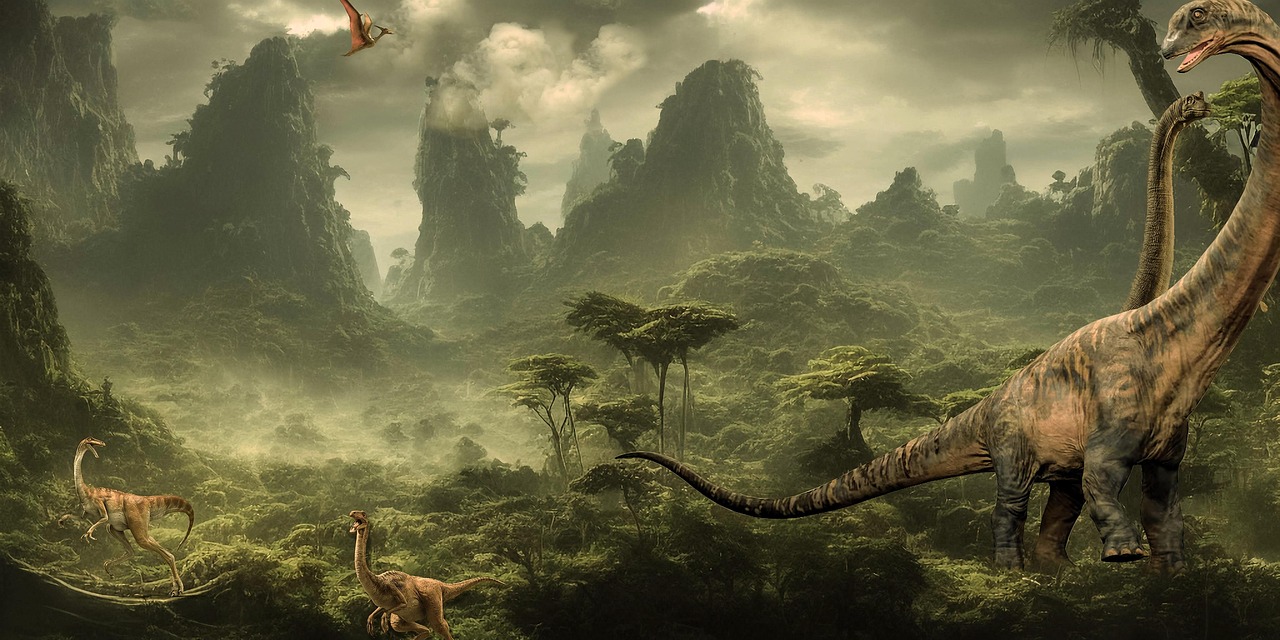
Picture this: you step through a time machine and emerge in a world where the very air thrums with life. The Jurassic Period, spanning roughly 56 million years from 201 to 145 million years ago, wasn’t just another chapter in Earth’s history – it was the golden age of giants.
What made this era so special? The heyday of dinosaurs, the Jurassic era saw Earth’s climate change from hot and dry to humid and subtropical. The Jurassic period was characterized by a warm, wet climate that gave rise to lush vegetation and abundant life. This wasn’t just a brief moment of prosperity; it was a prolonged period where conditions aligned perfectly to create what can only be described as dinosaur heaven.
The Perfect Climate Recipe for Giants

The climate of the Jurassic was generally warmer than that of present, by around 5–10 °C (9–18 °F), with atmospheric carbon dioxide likely about four times higher. Think of it like cranking up Earth’s thermostat and adding a generous dose of greenhouse gases – but in a way that actually worked wonders for life.
The climate of the Jurassic was warmer than the present, and there were no ice caps. Forests grew close to the poles, with large arid expanses in the lower latitudes. This meant that even Antarctica was green and habitable. Analyses of oxygen isotopes in marine fossils suggest that Jurassic global temperatures were generally quite warm. Geochemical evidence suggests that surface waters in the low latitudes were about 20 °C (68 °F), while deep waters were about 17 °C (63 °F).
The lack of polar ice caps created a world where ocean levels were dramatically higher than today. The world was warm, keeping large ice caps from forming, which led to high global sea levels by the Jurassic that continued into the Cretaceous. This flooded vast areas of continents, creating shallow inland seas that would become nurseries for marine life.
When Continents Split and Life Exploded
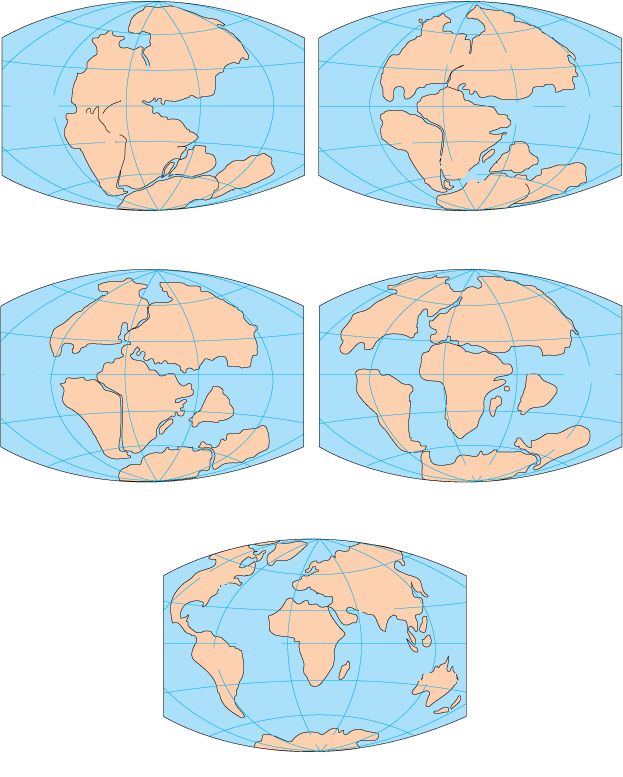
The breakup of the supercontinent Pangaea wasn’t just a geological event – it was a biological revolution waiting to happen. By the beginning of the Jurassic, the supercontinent Pangaea had begun rifting into two landmasses: Laurasia to the north and Gondwana to the south. This continental divorce had unexpected benefits for life.
Our journey through Imperial’s research begins in the Middle Jurassic Period, as the supercontinent Pangea was splitting into separate continents – Laurentia in the North and Gondwana in the South. Rainfall increased due to the seas forming between the landmasses which allowed lush ferns and forests to grow.
The formation of new ocean basins created more coastal areas and changed weather patterns dramatically. The breakup of the supercontinent Pangaea played a starring role in shaping Jurassic climate patterns. As landmasses drifted apart, new oceans formed, and existing ones expanded. This continental shuffle had far-reaching effects on global climate: It altered wind patterns and ocean currents.
The Rise of the Sauropod Superstars

If the Jurassic had a Hall of Fame, sauropods would dominate every category. The herbivorous sauropod dinosaurs of the Jurassic and Cretaceous periods were the largest terrestrial animals ever, surpassing the largest herbivorous mammals by an order of magnitude in body mass. We’re talking about animals that make modern elephants look like house cats.
Huge sauropod herbivores (such as 87-foot [27-meter] long Diplodocus) and carnivores (such as 35-foot [11-meter] long Allosaurus) emerged. To put this in perspective, imagine trying to sprint alongside a Diplodocus – you’d need almost four seconds just to run from its head to its tail. Some Late Jurassic dinosaurs could reach enormous sizes, walk on four legs and some even had elaborate display structures. This is when we see iconic giants like Stegosaurus, Brachiosaurus and Diplodocus. By then, dinosaurs were dominating the land, accounting for all terrestrial animals more than a metre long.
The Secret Behind Dinosaur Gigantism
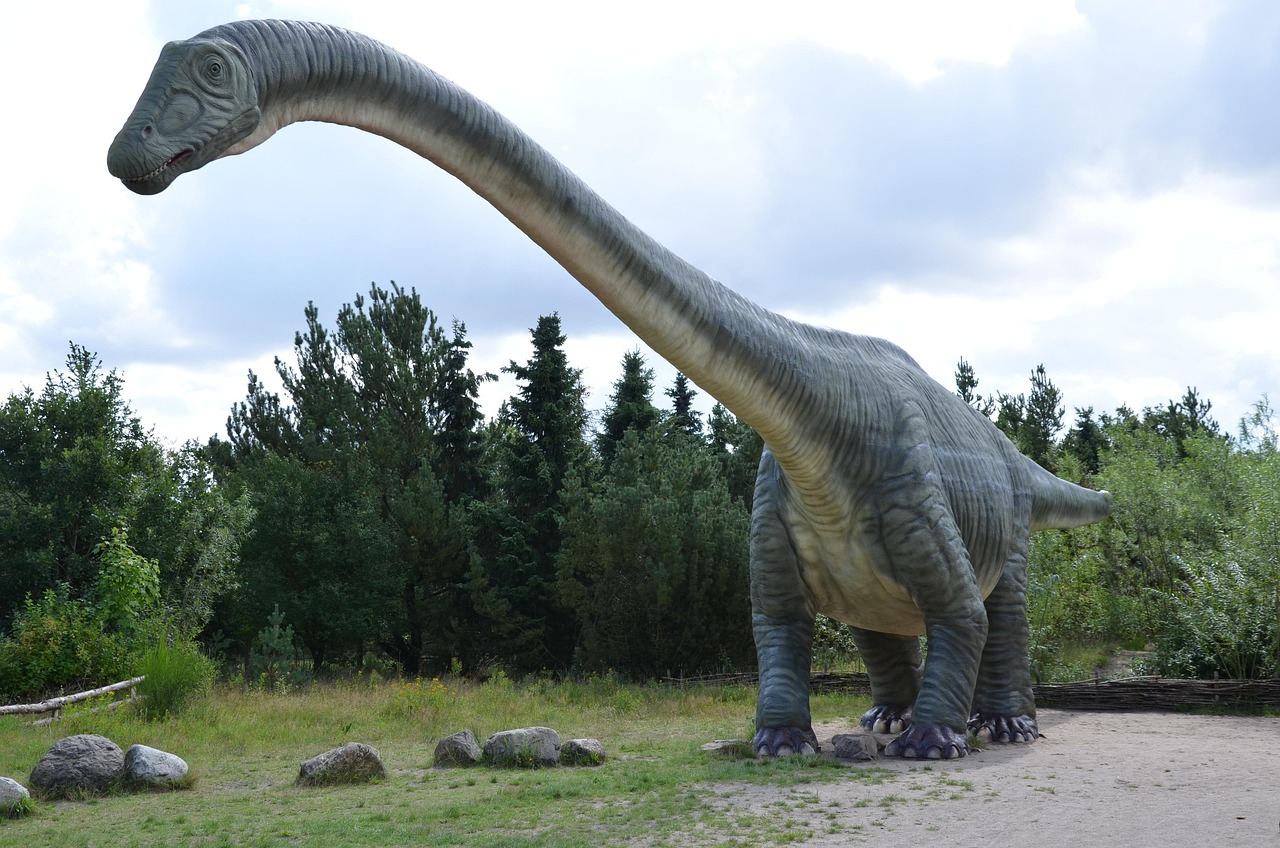
How did these animals get so ridiculously large? The answer lies in a perfect storm of evolutionary innovations. Gigantism was less the outcome of a number of novel innovations and more a perfect coalescence of primitive and not-so-primitive traits that, once they came together, seemed to all but guarantee a massive jump in body size. This phenomenon, which palaeontologists have referred to as an evolutionary cascade, created a unique scenario in which sauropods were constrained only by the biophysical laws of how big a land animal is “allowed” to become.
Another secret to dinosaurs’ size lay inside their bones. Unlike most other reptiles and mammals, sauropods and theropods had some bones that were hollow and filled with air. Dinosaurs’ air-filled bones were lighter than solid bones, but still strong. It’s like nature discovered carbon fiber millions of years before humans did.
As part of their respiratory system, sauropods had a complex network of air sacs that gave them two advantages. Not only did the air sacs allow the dinosaurs to breathe more efficiently – more like birds than mammals – but the soft tissues invaded bone to make the skeletons of these dinosaurs lighter without sacrificing strength.
A World Built for Herbivore Success

The Jurassic wasn’t just warm and humid – it was a plant paradise. Imagine a world where plants reign supreme. The Jurassic climate, with its warmth and abundant rainfall, created a paradise for plant life. But these weren’t the flowering plants we know today.
Although Jurassic dinosaurs are sometimes drawn with palm trees, there were no palms or any other flowering plants – at least as we know them today – in the Jurassic. Instead, ferns, ginkgoes, bennettitaleans or “cycadeoids,” and true cycads – like the living cycad pictured above, lower left – flourished in the Jurassic. Conifers were also present, including close relatives of living redwoods, cypresses, pines, and yews.
This abundance of plant life created the perfect fuel for massive herbivores. The analysis showed that adult body size increased with food-plant quality and availability but decreased with higher mortality due to predators and other factors. This conclusion is consistent with geological studies that suggest a high quality and availability of food plants in the Mesozoic era, efficient air-sac breathing, and the lightweight bones of sauropod dinosaurs, allowing rapid growth of small individuals.
Ocean Paradise: Marine Reptile Wonderland
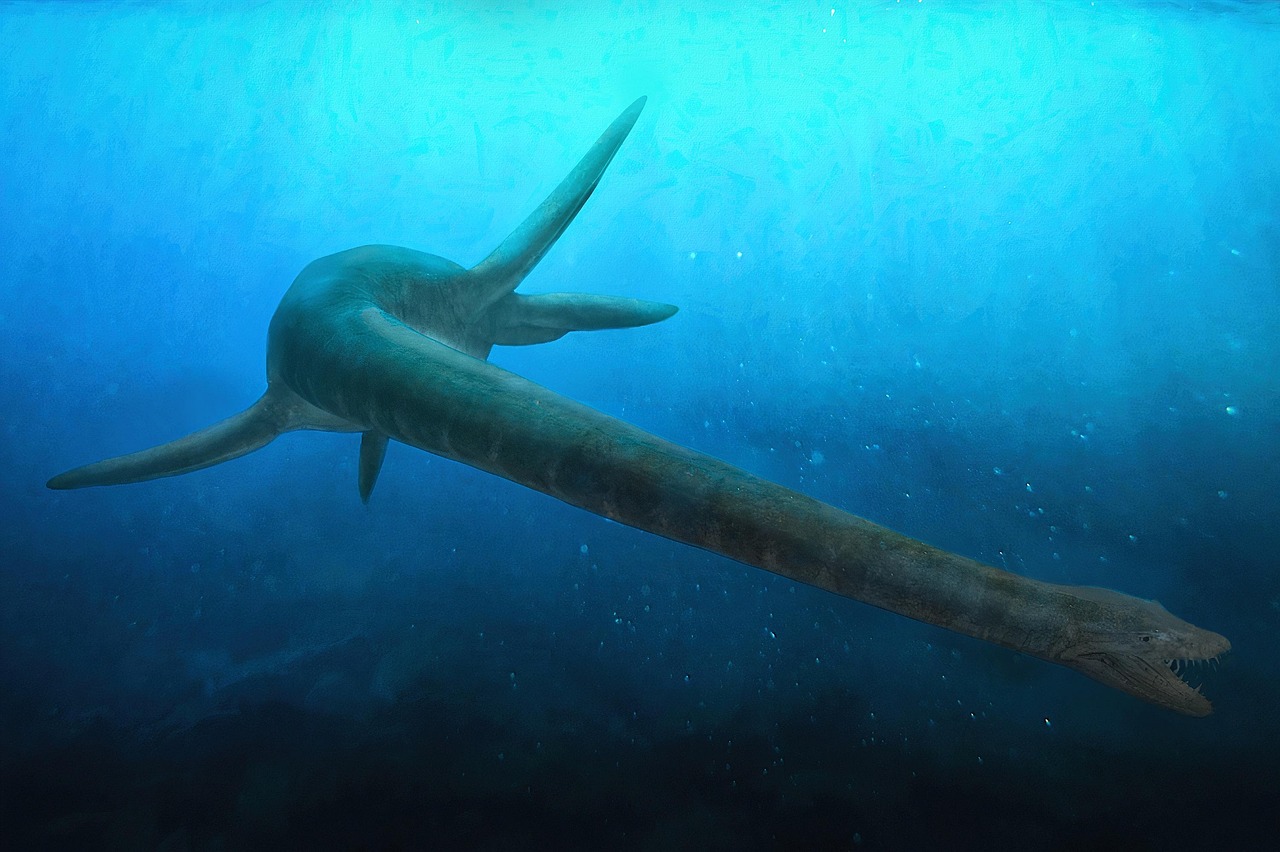
While dinosaurs ruled the land, the Jurassic oceans hosted their own spectacular show. The oceans, especially the newly formed shallow interior seas, teemed with diverse and abundant life. At the top of the food chain were the long-necked and paddle-finned plesiosaurs, giant marine crocodiles, sharks, and rays. Fishlike ichthyosaurs, squidlike cephalopods, and coil-shelled ammonites were abundant.
Marine reptiles flourished in the Mesozoic oceans, filling ecological roles today dominated by crocodylians, large fish, sharks and cetaceans. Many groups of these reptiles coexisted for over 50 million years (Myr), through major environmental changes. These weren’t just big lizards with flippers – they were sophisticated marine predators that had evolved specifically for ocean life.
The diversity was staggering. The largest bony fish of all time, Leedsichthys, measuring up to 17 metres (56 feet) long, lived during the Jurassic. Imagine encountering a fish the size of a sperm whale swimming through Jurassic seas alongside massive marine reptiles.
The Age of Aerial Pioneers
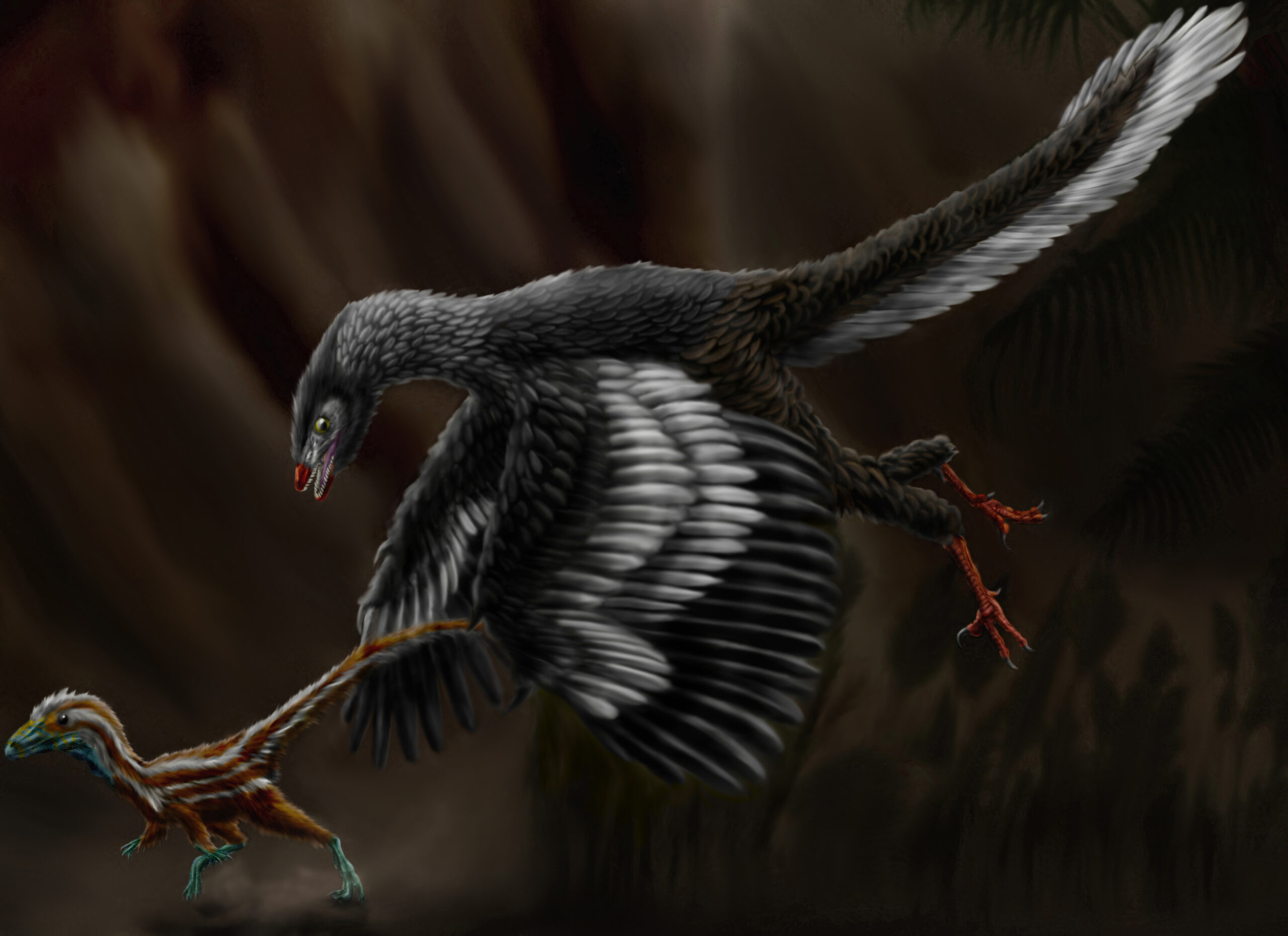
The Jurassic skies weren’t empty either. The earliest known bird, Archaeopteryx, took to the skies in the late Jurassic, most likely evolved from an early coelurosaurian dinosaur. Archaeopteryx had to compete for airspace with pterosaurs, flying reptiles that had been buzzing the skies since the late Triassic period.
This was aviation’s earliest arms race. In the Jurassic another flying group took to the air – birds – which evolved quite separately from the pterosaurs. Birds and pterosaurs serve as an example of a common theme in evolution, the parallel development of different types of body structures and function for the same reason, in this case for flight.
The first stem-group birds appeared during the Jurassic, evolving from a branch of theropod dinosaurs. Meanwhile, pterosaurs had already been perfecting their aerial lifestyle for millions of years. The competition for airspace must have been intense, driving both groups to evolve increasingly sophisticated flight adaptations.
Mass Extinction Sets the Stage

Ironically, the Jurassic’s success story began with one of Earth’s great disasters. The end of the Triassic Period, 201.4 million years ago, is marked by one of our planet’s top five major mass extinction events. What caused it isn’t clear, though massive volcanic activity could be to blame. About 76% of all species died out as a result. But dinosaurs survived and went on to thrive in the Jurassic Period.
This mass extinction was like nature hitting the reset button, clearing ecological niches for dinosaurs to fill. Dinosaurs, which had morphologically diversified in the Late Triassic, experienced a major increase in diversity and abundance during the Early Jurassic in the aftermath of the end-Triassic extinction and the extinction of other reptile groups, becoming the dominant vertebrates in terrestrial ecosystems.
It’s a sobering reminder that sometimes catastrophe paves the way for unprecedented success. The dinosaurs didn’t just survive – they inherited the Earth.
High Oxygen and Volcanic Activity

The Jurassic atmosphere itself seemed designed to support massive life forms. Among other possibly different boundary conditions, atmospheric oxygen levels (Hengst et al., 1996; Berner et al., 2007; Ward, 2006), levels of carbon dioxide (Maurer, 2002) as well as higher ambient temperatures have been implicated in sauropod dinosaur gigantism. All else being equal, would an increased level of atmospheric oxygen allow the evolution of gigantic terrestrial tetrapods? This possibility is suggested by the example discussed above of the uniquely gigantic dragonflies of the Carboniferous (Lighton, 2007).
The Jurassic was a time of intense volcanic activity, particularly in the early stages of the period. While this might sound destructive, volcanic activity actually played a crucial role in creating the greenhouse conditions that made the period so hospitable to life.
However, recent research suggests that environmental factors alone don’t fully explain dinosaur gigantism. Sauropods didn’t grow so large because of reduced gravity, greater oxygen content in the prehistoric atmosphere, or because of an overabundance of food, the paleontologists concluded. More subtle factors accounted for big body size. A characteristic the dinosaurs shared with birds and the way sauropods reproduced made their Mesozoic growth spurt possible.
Evolutionary Innovation in Real Time
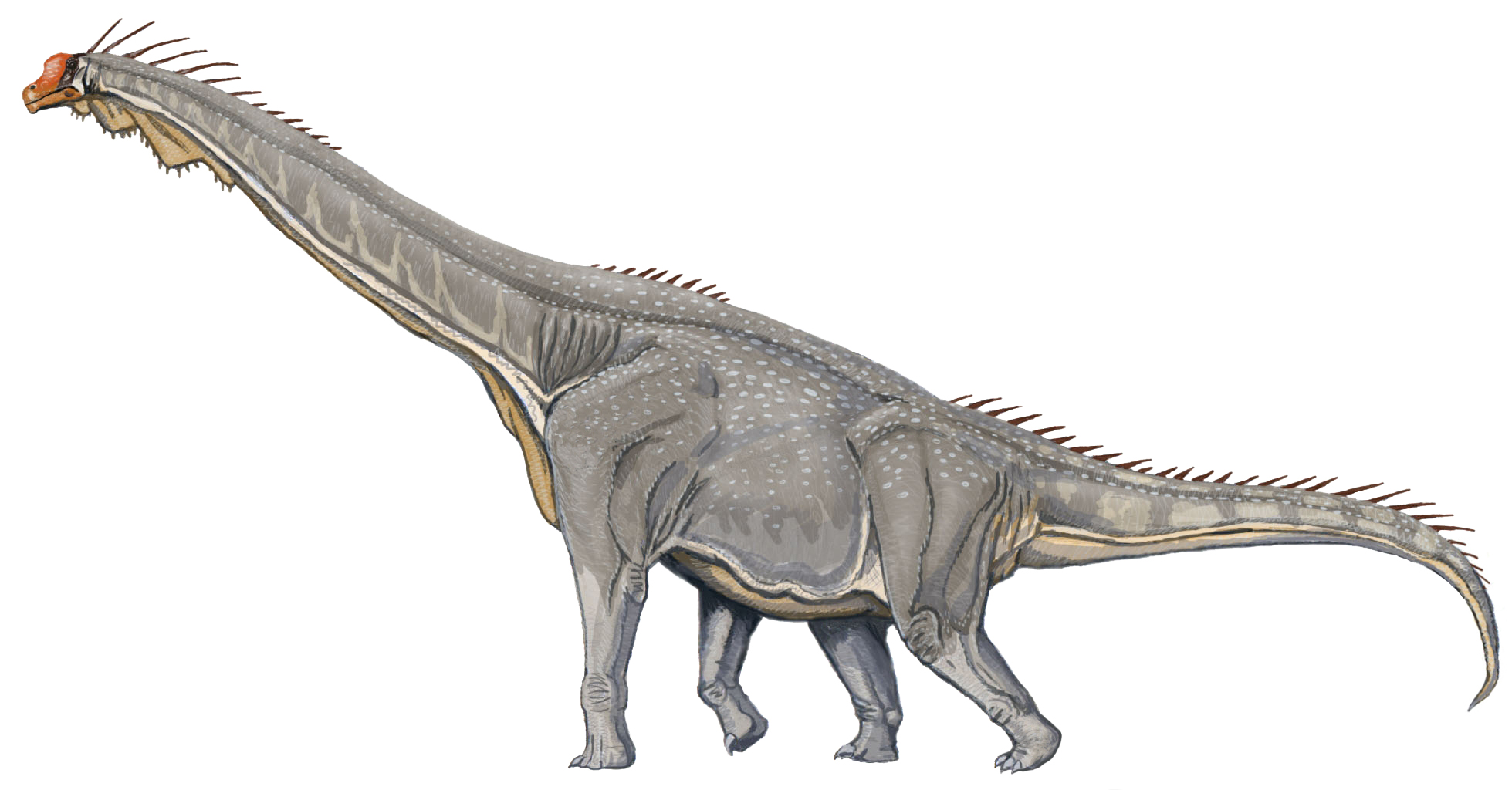
The Jurassic witnessed evolution working at breakneck speed. The sauropodomorphs, or the diverse group of long-necked herbivores from which the first sauropods evolved, were puny when compared to their later sauropod cousins, but as soon as the first true sauropods evolved near the end of the Triassic (200 million years ago) they reached estimated body masses of 10 tons or more. In fact, extremely large body size (in excess of an estimated 40 tons) evolved multiple times in different lineages, and even though we often focus on which dinosaur was the biggest of them all the truth of the matter is that from the Late Jurassic to the end of the Cretaceous, a time spanning 85 million years, the world was populated by numerous kinds of gigantic sauropods.
This wasn’t just one lineage getting lucky – it was parallel evolution of gigantism happening repeatedly. Although in general, sauropods were large, a gigantic size (40 t (39 long tons; 44 short tons) or more) was reached independently at multiple times in their evolution. Many gigantic forms existed in the Late Jurassic (specifically Kimmeridgian), such as the turiasaur Turiasaurus, the mamenchisaurids M
The speed of this evolutionary change is mind-boggling. Animals went from being relatively small and bipedal to becoming the largest land animals that ever existed, all within a geological blink of an eye.
The Perfect Storm of Success
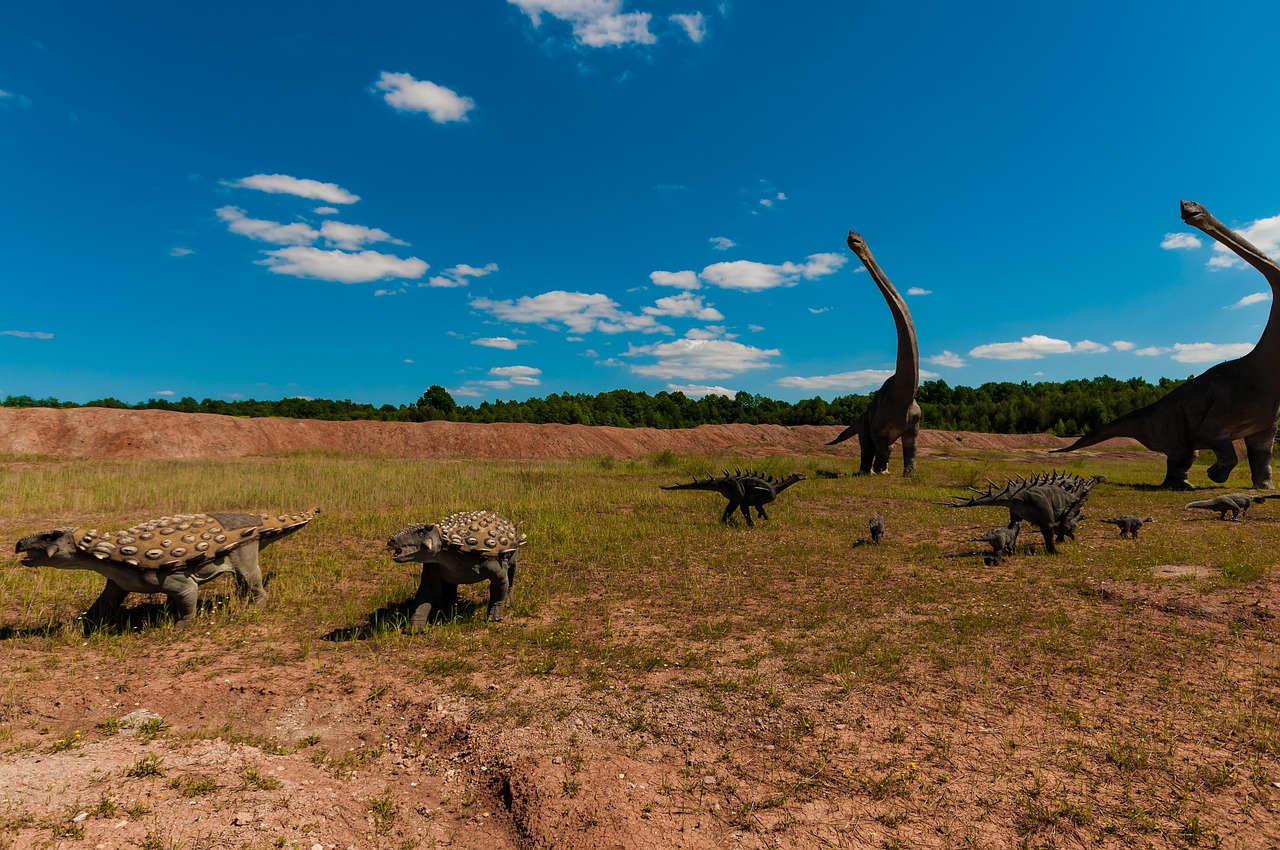
What made the Jurassic special wasn’t any single factor, but the convergence of multiple favorable conditions. Many new dinosaurs emerged – in great numbers. The combination of warm climate, abundant plant life, lack of major competitors, and innovative body plans created an explosion of diversity and size that has never been matched.
During the Early Jurassic, animals and plants living both on land and in the seas recovered from one of the largest mass extinctions in Earth history. Many groups of vertebrate and invertebrate organisms important in the modern world made their first appearance during the Jurassic. Life was especially diverse in the oceans – thriving reef ecosystems, shallow-water invertebrate communities, and large swimming predators, including reptiles and squidlike animals. On land, dinosaurs and flying pterosaurs dominated the ecosystems, and birds made their first appearance.
It’s like everything that could go right for life on Earth did go right, all at the same time. The result was an era of giants that still captures our imagination today.
Conclusion
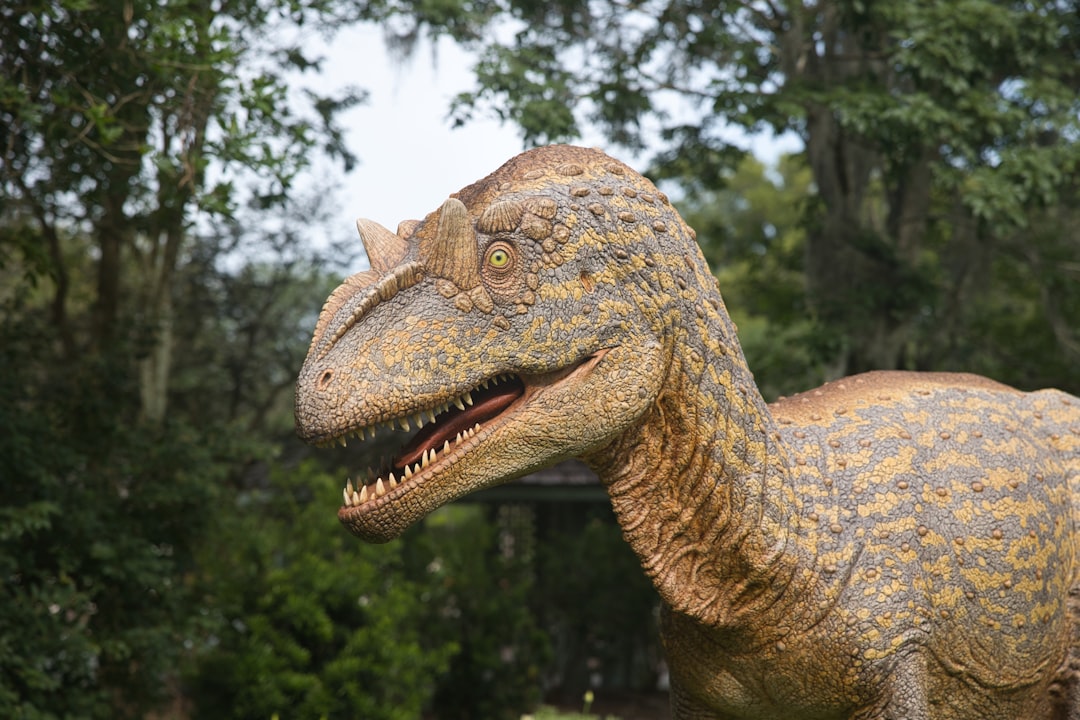
The Jurassic Period represents one of evolution’s greatest success stories – a time when Earth became a living laboratory for gigantism and diversity. From the massive sauropods that shook the ground with every step to the marine reptiles that ruled the seas, this era proved that when conditions are right, life doesn’t just survive – it supersizes.
The legacy of this prehistoric paradise lives on in our museums, our imaginations, and in the birds that still carry dinosaur DNA in their wings. The Jurassic wasn’t just dinosaur heaven – it was a glimpse of what life can achieve when given the perfect stage. What would you have guessed could emerge from such ancient perfection?

